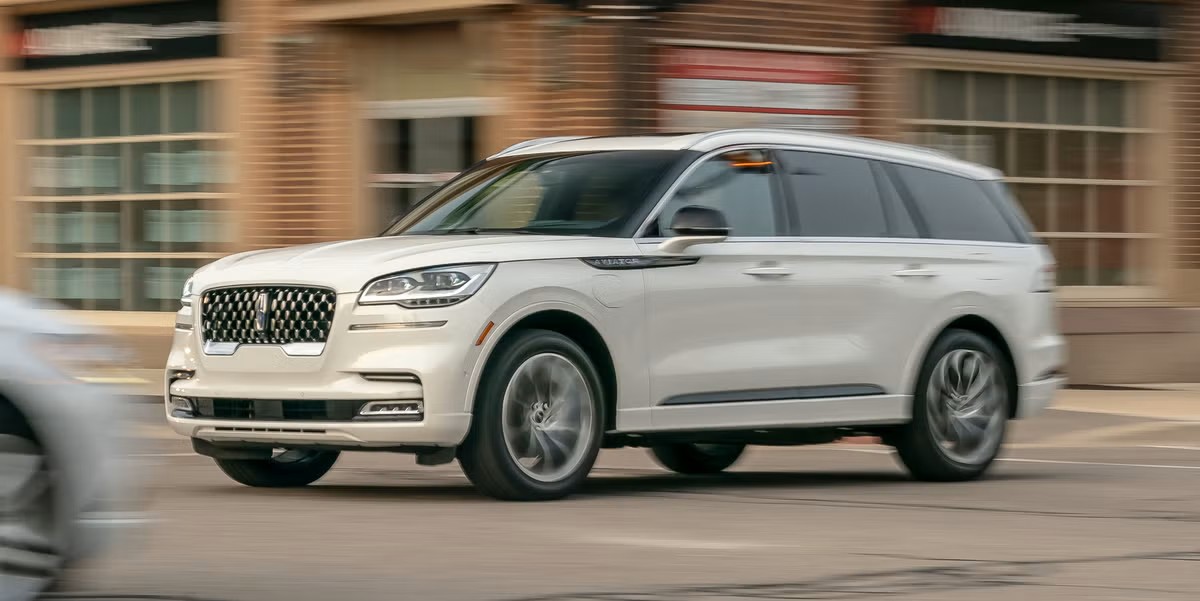Hybrid vehicles have come a long way from their humble beginnings. Once seen as quirky, slow, or reserved for the environmentally obsessed, hybrids have now taken center stage in mainstream automotive markets. Whether you’re a city commuter, a long-haul driver, or someone who simply wants to save on fuel costs without going fully electric, hybrid cars offer a balanced middle ground.
They pair internal combustion engines with electric motors to reduce fuel consumption, lower emissions, and, in many cases, enhance performance. However, not all hybrids are created equal—and when it comes to your money, that difference matters more than ever.
Today’s car buyers are more value-conscious and future-focused than ever. With economic uncertainty, rising interest rates, and the unpredictability of fuel prices, many consumers are asking themselves not just “what car do I want?” but “what car is worth my investment?”
This is where resale value, longevity, maintenance costs, and brand trust come into play. Some hybrids prove themselves to be incredibly smart buys, saving owners thousands in gas, holding their value well, and continuing to perform reliably well past 100,000 miles. Others, however, lose their luster quickly—either because of brand reputation, lack of market demand, or poor long-term performance.
In this article, we break down 5 hybrids that are absolutely worth every penny and 5 that depreciate faster than you’d expect, costing owners far more in the long run. Our goal isn’t just to celebrate the best of the hybrid world—it’s also to issue a fair warning about those vehicles that may look great on paper but fail to hold up in the real world of ownership and resale. A hybrid car should be an investment in your future—not a liability hiding behind good fuel economy numbers.
The five hybrids we highlight as worthwhile investments excel in several key areas: long-term reliability, strong brand reputation, reasonable maintenance costs, high fuel efficiency, and consistent consumer satisfaction. These are vehicles that offer real-world value—not just during the first few years, but over the entire ownership lifecycle.
Whether it’s the bulletproof Toyota Prius, the efficient and rugged RAV4 Hybrid, or the surprisingly capable Ford Maverick Hybrid, these models prove that hybrids can be both practical and financially savvy decisions.
On the flip side, not all hybrid badges guarantee peace of mind. Some of the vehicles we examine on the “loses value instantly” list struggle with weak electric range, questionable long-term reliability, low brand trust, or simply poor market demand. In many cases, these hybrids are priced higher than their gas-powered counterparts but don’t deliver enough extra benefit to justify the premium.
Plug-in models with limited range and complex drivetrains—like the Lincoln Aviator Grand Touring or BMW 330e—can actually hurt your wallet more than help it over time. And when the used market sees these vehicles coming, prices tumble, and resale becomes a challenge.
Whether you’re shopping for a hybrid right now or just want to understand the landscape better, this guide will give you clear insight into what to look for—and what to avoid. Hybrid vehicles are no longer fringe products; they’re central to the modern automotive world. But like with any new technology, smart buying requires cutting through the marketing and focusing on real-world results.
So let’s break it down: the 5 hybrids that are worth every penny—and the 5 that lose value the moment you drive them off the lot. Armed with this knowledge, you’ll be in a much better position to make a hybrid purchase that suits both your driving needs and your financial goals.
Also Read: 5 Cars With the Cheapest Brake Jobs and 5 With Costly Discs
5 Hybrids Worth Every Penny
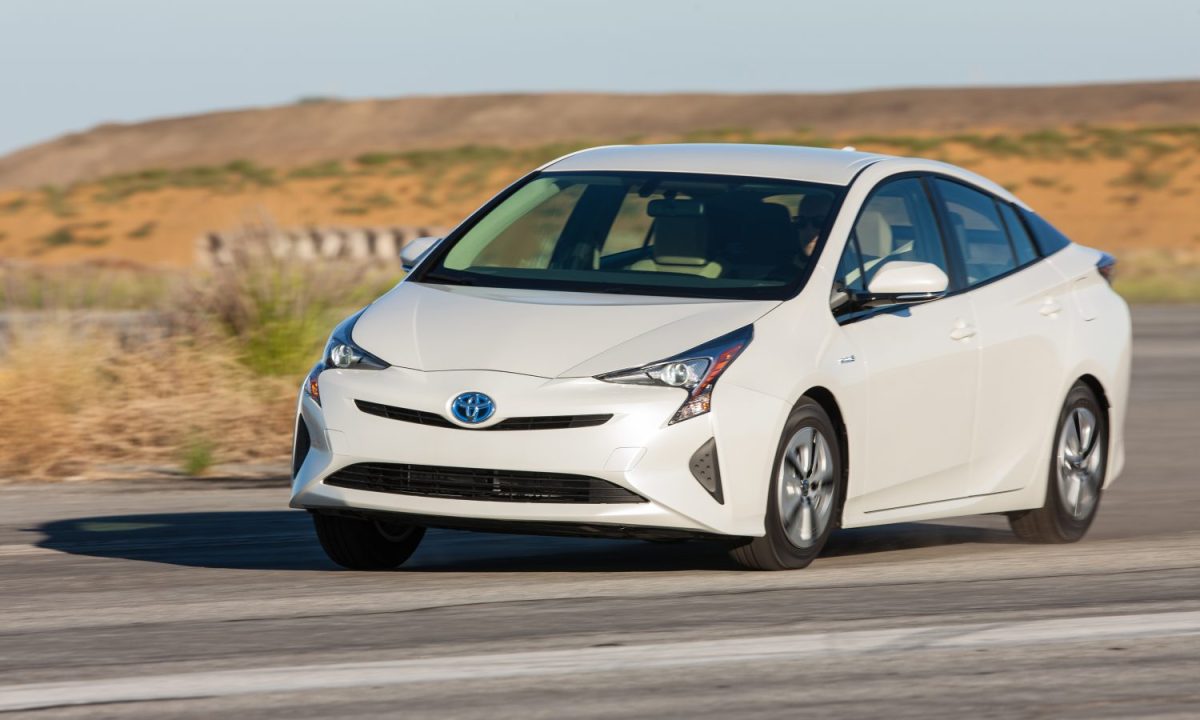
1: Toyota Prius
The Toyota Prius is arguably the most iconic hybrid vehicle in automotive history. Since its introduction in the late 1990s, it has consistently represented the gold standard for hybrid technology. For over two decades, the Prius has stood out for its unparalleled fuel efficiency, mechanical simplicity, and overall durability. It didn’t just popularize hybrids; it normalized them.
Today, the Prius is synonymous with economical, eco-conscious driving, and it continues to evolve while retaining its core identity. The legacy of the Prius gives it intrinsic value, which translates directly to strong resale performance and consumer confidence.
One of the most compelling aspects of the Prius is its bulletproof reliability. Toyota has refined its Hybrid Synergy Drive system to the point where it’s no longer experimental—it’s expected. Reports from long-term owners regularly cite mileages of 200,000 to 300,000 miles with relatively few major repairs.
This track record isn’t limited to one generation either. Even the earlier models are often still running strong today, which speaks volumes about Toyota’s engineering. That kind of consistency makes the Prius one of the safest hybrid investments on the road, both new and used.
Fuel economy is where the Prius absolutely shines. Most models average over 50 miles per gallon in real-world driving, and newer trims with eco packages push those numbers even higher. Unlike plug-in hybrids that require charging infrastructure, the standard Prius delivers its benefits without any lifestyle changes for the driver.
This seamless transition to better mileage and lower emissions is a major selling point. Over years of ownership, the gas savings alone can offset a significant portion of the car’s initial cost, making the Prius a smart financial choice.
The ownership experience is also elevated by low operating costs. Insurance premiums tend to be lower than the segment average, parts are affordable, and the hybrid battery is backed by Toyota’s generous warranty—typically 8 to 10 years or up to 150,000 miles depending on the region.
Furthermore, due to the Prius’s popularity, there’s a wealth of aftermarket support and specialized knowledge at independent repair shops. That means you’re not locked into expensive dealership visits just to maintain the hybrid components. All of this contributes to low cost-of-ownership and excellent value retention.
From a usability standpoint, the Prius has improved with each new generation. Earlier criticisms around its aesthetics and driving feel have largely been addressed. The latest models offer more conventional styling, a quieter and more refined ride, and even sportier trim levels for those who want a bit more engagement behind the wheel.
The tech suite is well-integrated, with Apple CarPlay, Android Auto, and a host of safety features that come standard. It’s no longer just a fuel-saver; it’s a genuinely competent daily driver by modern standards.
What truly sets the Prius apart, though, is the strength of its brand identity. People know what a Prius stands for. That recognition builds trust and demand in the used market, especially for those who prioritize environmental responsibility or just want a dependable, no-fuss car.
Whether you’re a commuter, a student, or even a rideshare driver, the Prius offers long-term savings, hassle-free maintenance, and the peace of mind that comes from driving one of the most proven hybrid systems ever built. It’s not just worth every penny—it might be the smartest hybrid investment, period.
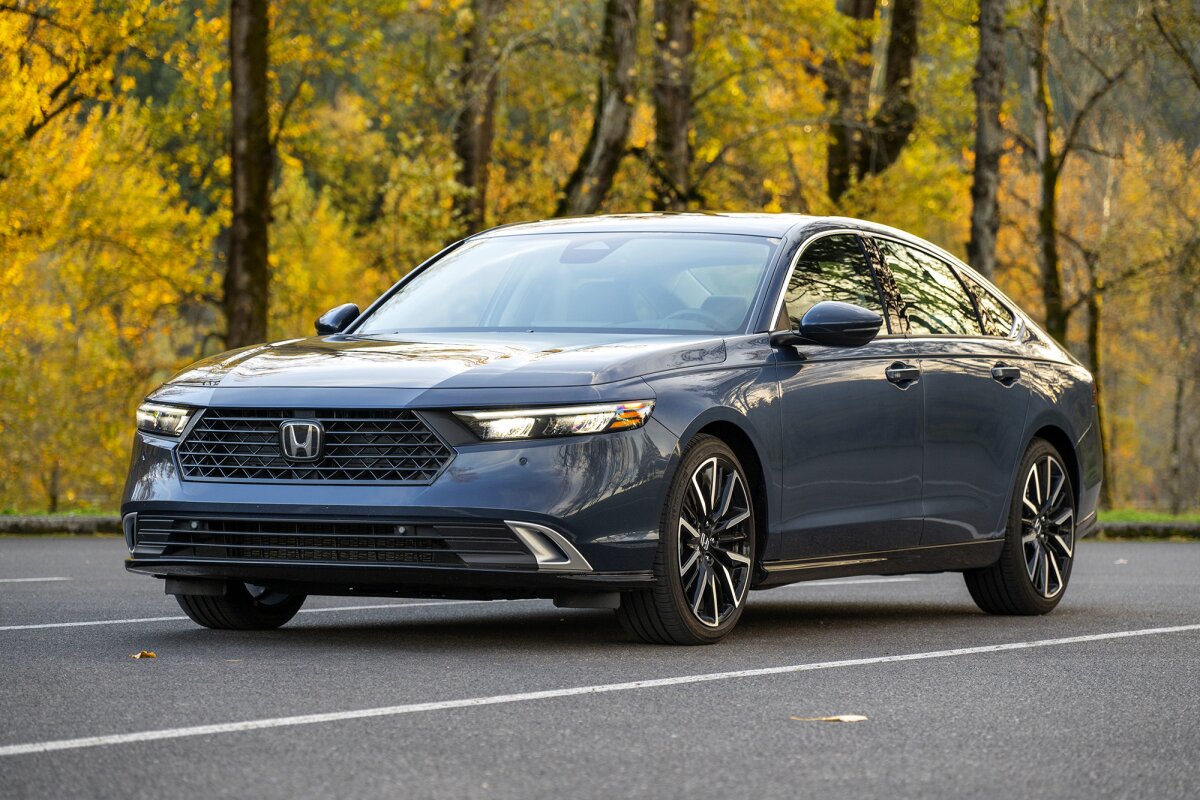
2: Honda Accord Hybrid
The Honda Accord Hybrid is the perfect blend of familiar functionality and advanced hybrid engineering. It takes everything drivers have loved about the standard Accord for decades—comfort, reliability, and smooth driving—and supercharges it with fuel efficiency and low emissions.
For anyone who wants a midsize sedan that doesn’t force them to compromise between driving enjoyment and economic sensibility, the Accord Hybrid is a near-perfect choice. It delivers real-world value without sacrificing space, performance, or refinement.
Performance-wise, the Accord Hybrid surprises many with its refined power delivery. The dual-motor hybrid system doesn’t rely on a traditional transmission, but instead uses a unique e-CVT that mimics gear shifting while optimizing fuel use. This translates to immediate torque, especially in city driving, and a quiet, confident ride on highways.
It’s a hybrid that feels polished rather than experimental—precisely the kind of system you want when you’re planning to keep a car for the long haul. Drivers who care about responsiveness will appreciate that the Accord Hybrid doesn’t feel sluggish, a problem that plagues some budget hybrids.
Inside, the Accord Hybrid feels like a premium offering at a mid-range price. The cabin is spacious, with high-quality materials, supportive seats, and ample legroom both front and rear. Honda has clearly focused on maximizing comfort without resorting to gimmicks.
Tech-wise, newer models feature a crisp digital instrument cluster, intuitive infotainment controls, and standard smartphone connectivity. The seamless integration of tech and comfort makes this a hybrid that feels truly modern and driver-friendly, even after years of ownership.
Where the Accord Hybrid truly shines is in its reliability and resale value. Honda has long been associated with dependable vehicles, and the Accord is one of its strongest nameplates. The hybrid system, unlike some competitors, has proven itself over multiple generations without the high battery failure rates seen in earlier or less refined hybrid models.
Even after several years, Accord Hybrids hold their value well, especially compared to luxury hybrids or less popular nameplates. This makes it a low-risk investment for anyone concerned about depreciation.
Another hidden strength of the Accord Hybrid is how unintrusive the hybrid system is in terms of packaging. Many hybrids sacrifice trunk space or rear seat legroom for battery placement. The Accord, however, integrates its battery in a way that barely compromises utility.
You still get a usable trunk and split-folding rear seats, making it a practical choice for families or professionals who need to transport people and gear. It retains all the core usability that made the Accord a household name to begin with.
Finally, Honda’s hybrid technology also ages well, which is a huge plus for second-hand buyers. Unlike plug-in hybrids that may become obsolete due to limited electric-only range or changing charging standards, the Accord Hybrid’s powertrain is more self-contained and less reliant on outside infrastructure.
It runs efficiently in any environment and doesn’t require charging stations to unlock its full benefits. As a result, used Accord Hybrids continue to command strong interest in the resale market, making it a hybrid you can buy with confidence and resell with ease. It’s a textbook case of a vehicle that earns back every dollar you put into it.
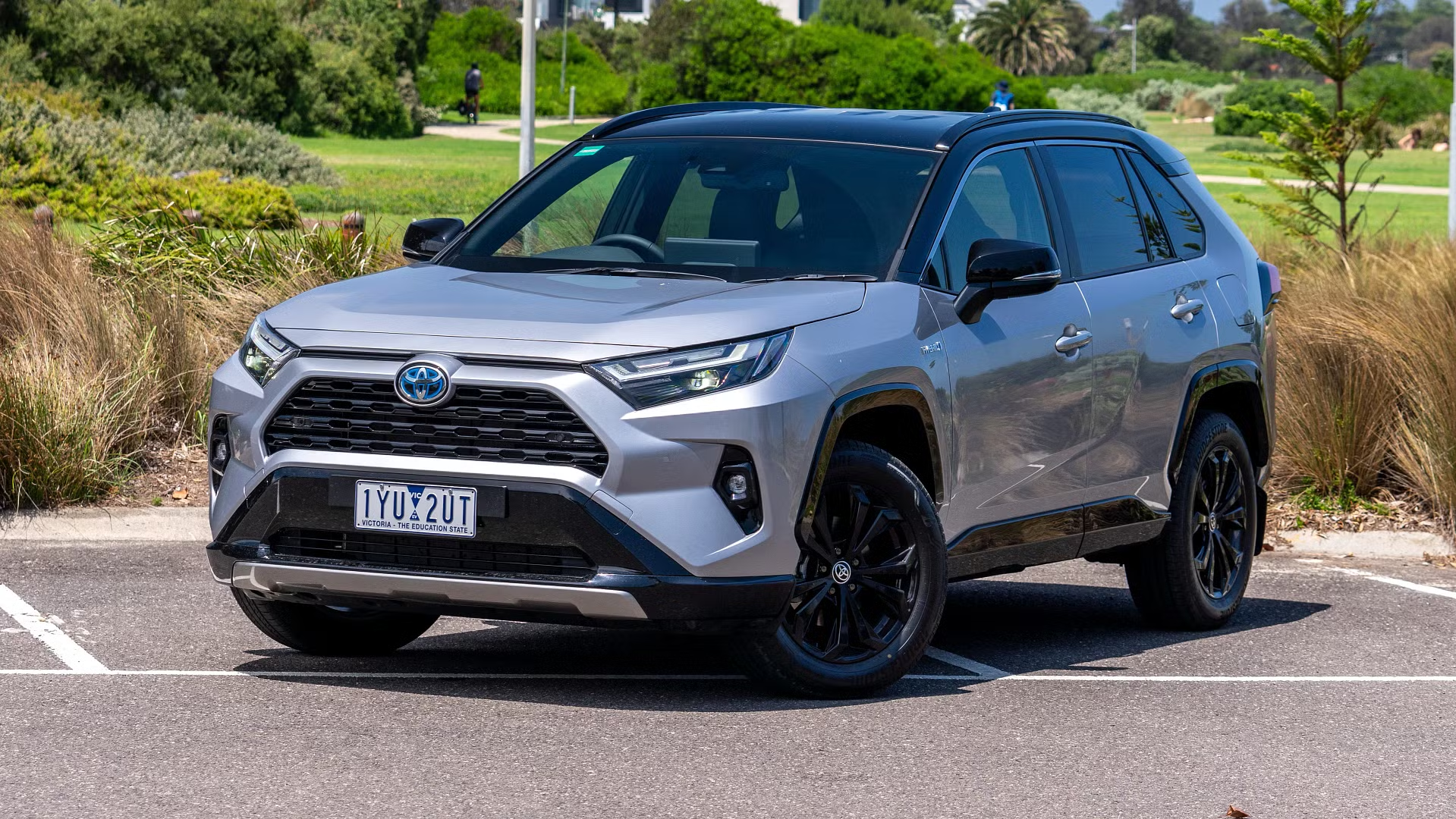
3: Toyota RAV4 Hybrid
The Toyota RAV4 Hybrid represents the sweet spot between practicality and efficiency, making it one of the most compelling buys in the hybrid SUV space. As consumer preferences have shifted sharply toward crossovers and SUVs, Toyota responded by electrifying its best-selling vehicle.
The result is a hybrid SUV that offers impressive fuel economy without compromising on the ruggedness, space, and everyday convenience drivers expect from a small SUV. It blends the versatility of a crossover with the technological trust of Toyota’s hybrid system, resulting in a vehicle that’s ideal for both city commuting and weekend adventures.
One of the defining traits of the RAV4 Hybrid is its standard all-wheel drive (AWD), something that sets it apart from many other hybrids in the same price range. Rather than making AWD an expensive upgrade, Toyota includes it with the hybrid variant, enhancing its appeal in snow-prone regions and for outdoor enthusiasts.
This practical capability expands its versatility well beyond typical fuel-saving sedans. Whether it’s a weekend in the mountains, a snowy school run, or a grocery haul, the RAV4 Hybrid does it all with confidence and control.
The hybrid powertrain itself is Toyota’s proven 2.5-liter four-cylinder engine paired with two electric motors, creating a system that produces strong acceleration and exceptional efficiency. It delivers over 40 mpg in city driving, a figure few SUVs can match, especially those with all-wheel drive.
Drivers will find that the RAV4 Hybrid doesn’t feel sluggish or overly engineered; instead, it feels natural, responsive, and easy to live with. The electric torque comes in quickly off the line, and the transition between gas and electric power is smooth and barely noticeable.
Inside, the RAV4 Hybrid continues Toyota’s trend of elevating quality. The cabin is roomy and modern, with ample passenger space, an easy-to-use infotainment system, and good visibility all around. Materials feel durable and soft to the touch, and higher trims come with attractive extras like synthetic leather, a panoramic roof, or a premium JBL sound system.
Practicality is also excellent. The rear seats fold flat, the cargo area is spacious, and unlike many hybrids, the battery placement doesn’t compromise storage. This attention to utility is a big part of why the RAV4 Hybrid is such a hit with families and solo drivers alike.
Toyota’s long-standing reputation for durability directly enhances the RAV4 Hybrid’s resale value. These vehicles not only perform well out of the gate, but they also hold up impressively over time. With a hybrid battery warranty of up to 10 years or 150,000 miles, owners have peace of mind that their investment is protected.
And thanks to Toyota’s vast dealer and service network, maintenance and support are accessible almost anywhere. Even in the used market, RAV4 Hybrids are in high demand due to their reliability, fuel savings, and well-rounded feature set.
Lastly, it’s the brand familiarity and long-term desirability that make this hybrid shine. Buyers know what to expect from a Toyota SUV, and the hybrid version only enhances that perception. It’s efficient, dependable, and doesn’t make you sacrifice the benefits that people buy SUVs for in the first place. For buyers who want a vehicle that works hard without asking much in return—and will still be a strong asset years down the road—the RAV4 Hybrid is easily one of the best choices in the segment.
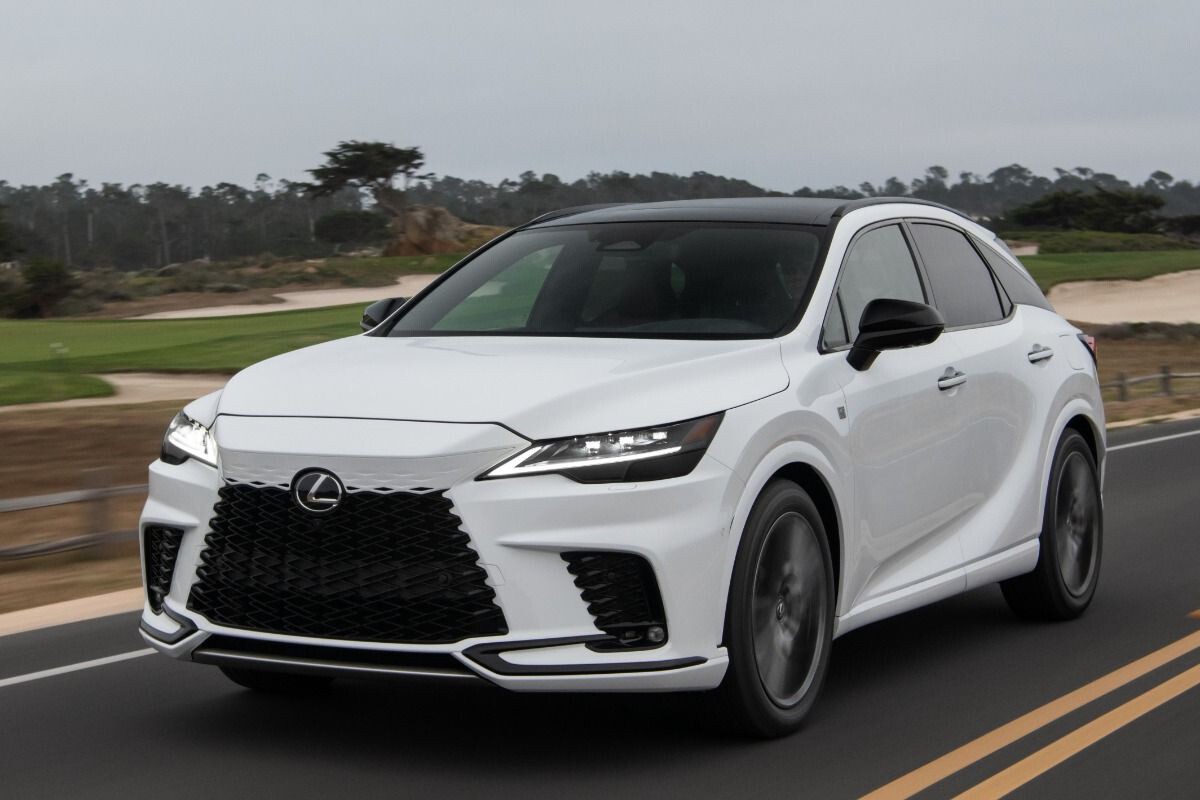
4: Lexus RX 500h
In the world of luxury hybrids, few vehicles hit the mark as precisely as the Lexus RX 500h. Known for its comfort, advanced technology, and the dependability of Toyota’s hybrid engineering, this luxury SUV provides a premium experience that doesn’t come with the typical guilt—or cost—of poor fuel economy. Lexus has long mastered the balance between luxury and reliability, and the RX 500h is a testament to how hybrid technology can enhance, rather than hinder, the upscale driving experience.
What distinguishes the RX 500h from earlier Lexus hybrids is its performance edge. This model features a turbocharged engine paired with a robust hybrid system, delivering more horsepower and better acceleration than its predecessors. It’s fast, responsive, and enjoyable to drive, all while maintaining fuel efficiency that rivals many non-luxury crossovers.
Unlike luxury plug-in hybrids that rely heavily on battery charging, the RX 500h’s self-charging system keeps things simple, efficient, and reliable without external charging infrastructure.
Inside, the cabin is everything you’d expect from a high-end SUV—elegant, spacious, and whisper-quiet. Lexus has significantly upgraded the interior of recent RX models, replacing the outdated infotainment interface with a sleek touchscreen system and improving ergonomics throughout.
Soft-touch materials, real wood or aluminum trim, and well-cushioned seating make for a serene and premium atmosphere. There’s plenty of space in both rows, making the RX 500h an excellent option for families, empty nesters, or professionals who want both performance and comfort.
From a financial standpoint, the RX 500h is a surprisingly smart investment for a luxury vehicle. Lexus hybrids, especially the RX lineup, retain their value far better than most European competitors. This is largely due to Lexus’s unmatched reputation for reliability, low maintenance costs, and strong customer service. Where a comparable German hybrid SUV may lose half its value in three years, the RX 500h holds its worth significantly better, often fetching premium prices even after multiple years of use.
Another point in the RX 500h’s favor is its balance of features and value. Despite being a luxury SUV, it comes standard with a long list of safety features, including adaptive cruise control, lane-keeping assist, blind-spot monitoring, and a full suite of airbags. Optional extras enhance the experience without veering into overpriced territory, a trap many European competitors fall into. Buyers can customize their RX 500h with confidence, knowing they’re adding value rather than bloating the price.
Ultimately, the Lexus RX 500h embodies everything a modern hybrid luxury SUV should be: powerful yet efficient, luxurious yet reliable, and elegant yet practical. It doesn’t try to reinvent the wheel, but instead perfects a formula that works—and continues to work long after the initial purchase. For those seeking an upscale hybrid that doesn’t just deliver a premium experience but also rewards you with years of value, the RX 500h is a top-tier choice worth every cent.
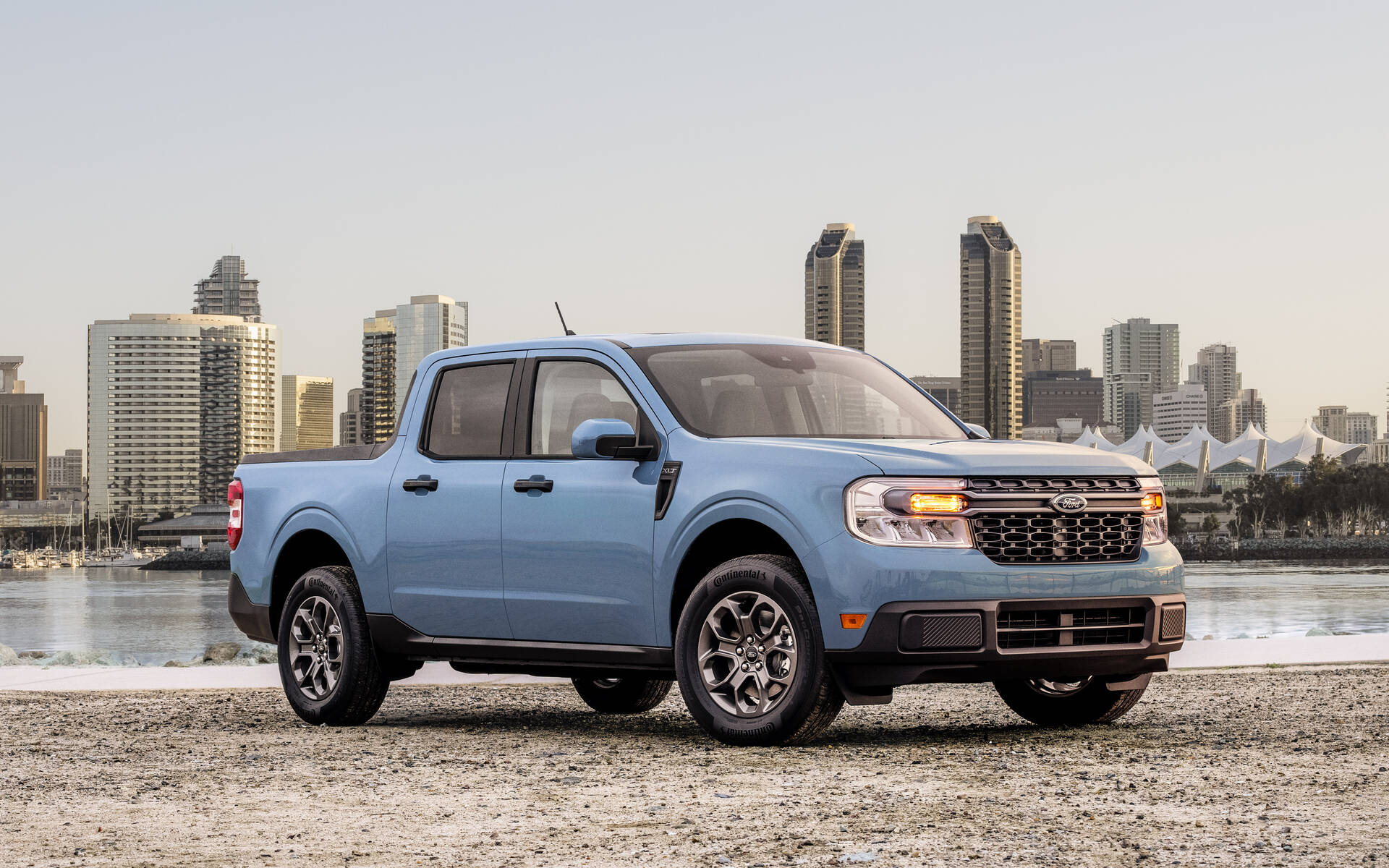
5: Ford Maverick Hybrid
The Ford Maverick Hybrid flipped the script on what buyers expect from a pickup truck. When it launched, it shattered expectations with its combination of practicality, hybrid efficiency, and affordability.
For years, pickup trucks were synonymous with poor fuel economy and high running costs, but the Maverick Hybrid challenged that narrative by offering a compact, front-wheel-drive truck that could deliver up to 40 miles per gallon in city driving. And best of all? It did this with a starting price well under the average new car cost, making it one of the best value propositions on the market.
At the heart of the Maverick Hybrid’s appeal is its flexibility. It’s a compact truck, which makes it ideal for urban drivers, but it still provides an open bed and payload capacity that make it useful for small projects, weekend adventuring, or DIY tasks. Its size makes it nimble in traffic and easy to park, while still giving owners the benefits of a pickup format. For many, it’s the “just right” size—more capable than a crossover but far more efficient and manageable than a full-size truck.
The hybrid powertrain—shared with the Ford Escape Hybrid—is smooth and responsive, offering enough power for daily tasks while sipping fuel like a compact sedan. It may not tow like a heavy-duty pickup, but for hauling furniture, home supplies, bicycles, or camping gear, it more than does the job. The drive experience is confident and car-like, which attracts buyers who wouldn’t normally consider a truck. Plus, it offers a novelty in the market: it’s one of the only hybrid pickups available at this price point.
Interior quality is another pleasant surprise. Ford kept the Maverick affordable, but not cheap. The cabin is smartly designed with useful storage cubbies, durable surfaces, and a minimalist yet functional dashboard layout. It comes with a standard touchscreen, Apple CarPlay and Android Auto, and modern safety features. Higher trims offer upgraded interiors, leather, and more tech, allowing buyers to tailor their truck to their budget and taste.
In terms of long-term value, the Maverick Hybrid is currently in high demand, especially in the used market. Its affordability, strong fuel economy, and limited competition make it a unicorn: a pickup with low running costs and high usability.
While early availability issues made it harder to get, the demand has only added to its cachet. Many buyers are discovering that used Mavericks are selling close to, or even above, MSRP—a clear sign of how much value this vehicle retains.
The Maverick Hybrid isn’t just a truck; it’s a rethink of what a modern, efficient utility vehicle can be. It proves that you don’t need to spend $50,000 or guzzle gas to get practicality, style, and usability.
For budget-conscious buyers, first-time truck owners, or eco-minded drivers who still want utility, the Maverick Hybrid is arguably one of the smartest purchases available today. It delivers an unbeatable combination of cost-effectiveness and function, making it, without question, worth every penny.
5 That Lose Value Instantly
1: Hyundai Ioniq Hybrid (Standard Non-Plug-in Version)
At first glance, the Hyundai Ioniq Hybrid seems like a great deal. It offers excellent fuel economy, modern styling, and an affordable starting price. It even rivals the Toyota Prius in terms of miles per gallon. But once the novelty wears off, the Ioniq Hybrid unfortunately suffers from significant depreciation, especially in the used market. Despite its technological promise and sleek looks, buyers tend to pass on it in favor of more established, better-known alternatives.
Part of the Ioniq’s problem lies in brand perception. While Hyundai has made great strides in reliability and innovation, many consumers still perceive the brand as budget-tier, especially when it comes to hybrids. Toyota and Honda have decades of hybrid trust built into their reputations. Hyundai’s hybrid systems are newer and, although competent, haven’t built the same level of consumer confidence. This doubt contributes to lower resale values and higher depreciation rates over time.
Additionally, the Ioniq Hybrid is often overshadowed by its plug-in and electric counterparts. The full EV version, in particular, garners more attention for its electric range and incentives, making the standard hybrid model feel like a compromise. Many buyers find themselves wishing they had opted for the EV instead, and that sentiment spills over into the used market. When it comes time to sell or trade in, dealerships and buyers alike see the standard Ioniq Hybrid as the least desirable of the lineup.
Interior quality and driving feel also leave something to be desired. While not terrible by any means, the cabin lacks the premium feel of its competitors, and road noise is more noticeable than it should be. The driving dynamics are uninspiring—fine for commuting, but far from engaging. The result is a car that performs adequately but doesn’t excite or differentiate itself enough to earn lasting loyalty. It becomes “just another hybrid” rather than a standout choice.
Furthermore, while the Ioniq boasts good reliability overall, repair costs and parts availability for hybrid-specific components can be an issue in certain regions. Since it’s not as ubiquitous as the Prius or Accord Hybrid, specialized mechanics and aftermarket parts aren’t as easy to find.
That increases long-term ownership costs and discourages potential secondhand buyers. Even a car with high mpg won’t hold its value if ownership feels inconvenient or niche.
Ultimately, the Ioniq Hybrid is a vehicle that seems smarter on paper than it is in practice. Its lack of brand weight in the hybrid space, tepid resale value, and general forgettability make it a hard sell in the used market. For new buyers, it depreciates quickly. For used buyers, it’s often overlooked. It may be efficient, but when it comes to value retention, the Ioniq Hybrid loses ground fast.
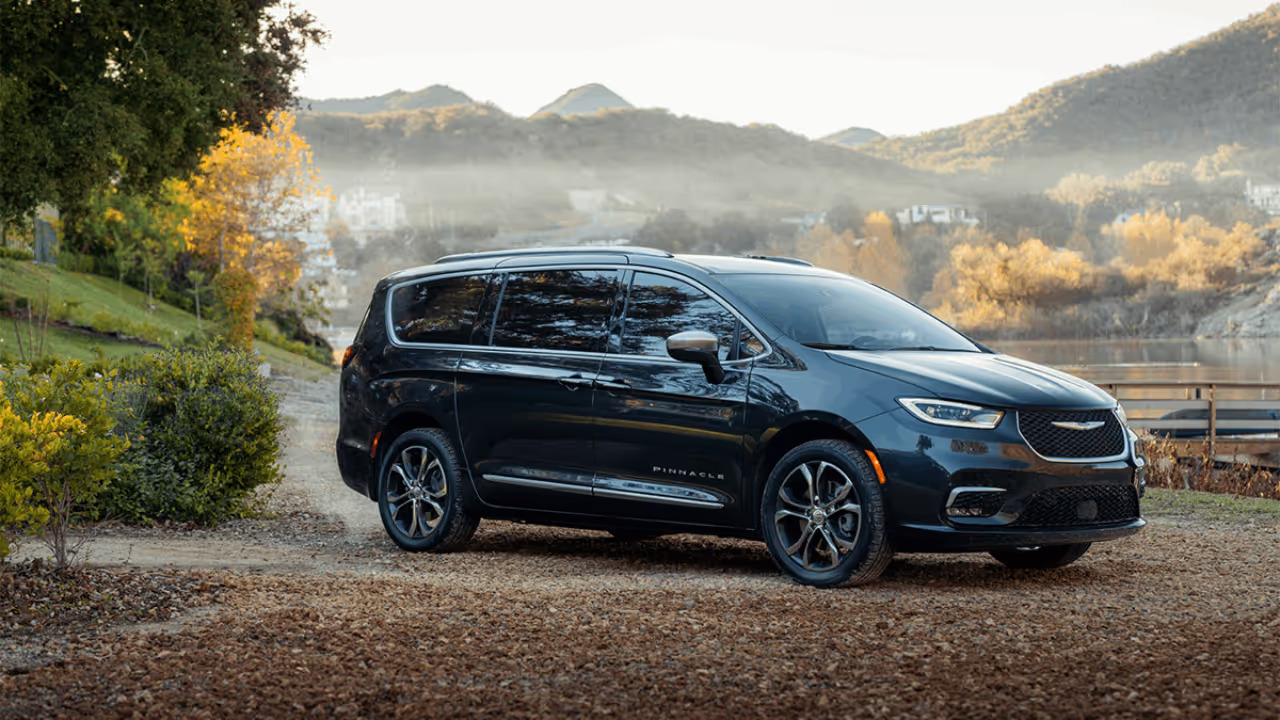
2: Chrysler Pacifica Hybrid
The Chrysler Pacifica Hybrid presents an ambitious concept: a family minivan with plug-in hybrid capabilities, offering electric-only range for daily driving and a gas engine for long trips. In theory, it’s a brilliant mix. But in practice, the Pacifica Hybrid struggles to maintain its value and appeal. Despite its innovation, it suffers from poor resale value and limited long-term desirability.
One of the biggest issues with the Pacifica Hybrid is its brand baggage. Chrysler has long struggled with reliability perceptions, and the Pacifica hasn’t escaped that shadow. Although the hybrid version addresses some of the efficiency complaints of gas-powered minivans, it’s still viewed with skepticism in terms of mechanical longevity. Early production issues and recalls have also tarnished its reputation. As a result, resale value plummets once it’s driven off the lot.
Another major drawback is cost versus utility. The Pacifica Hybrid often comes with a high price tag, especially for upper trims. While it’s marketed as a green alternative to large SUVs, buyers may hesitate to spend that much on a minivan—especially when fully gas-powered models from Honda or Toyota offer better long-term reliability for less money. And when it comes to resale, buyers aren’t eager to pay a premium for a hybrid powertrain in a body style that’s already losing popularity.
The plug-in nature of the Pacifica Hybrid also creates complexity. The battery takes up cargo space in a vehicle where space is everything. Some configurations even eliminate the popular “Stow ‘n Go” seating in the second row, removing one of the Pacifica’s best features. Many minivan shoppers are looking for flexibility and maximum storage—something the hybrid compromises in the name of electric capability.
Furthermore, public perception plays a big role in resale. Families, who are the primary demographic for minivans, are often risk-averse when it comes to vehicle purchases. When given the choice between a gas-powered minivan with a decades-long reputation and a newer hybrid with some growing pains, many will opt for the known quantity. As a result, the Pacifica Hybrid suffers both on the lot and in resale listings.
In the end, while the Pacifica Hybrid may have noble intentions, its high cost, brand mistrust, and practical compromises severely hurt its value over time. It’s a minivan with an identity crisis—too expensive for its segment and not compelling enough as a hybrid. Despite its potential, it depreciates rapidly, making it a hybrid that loses value almost as fast as it drives off the lot.
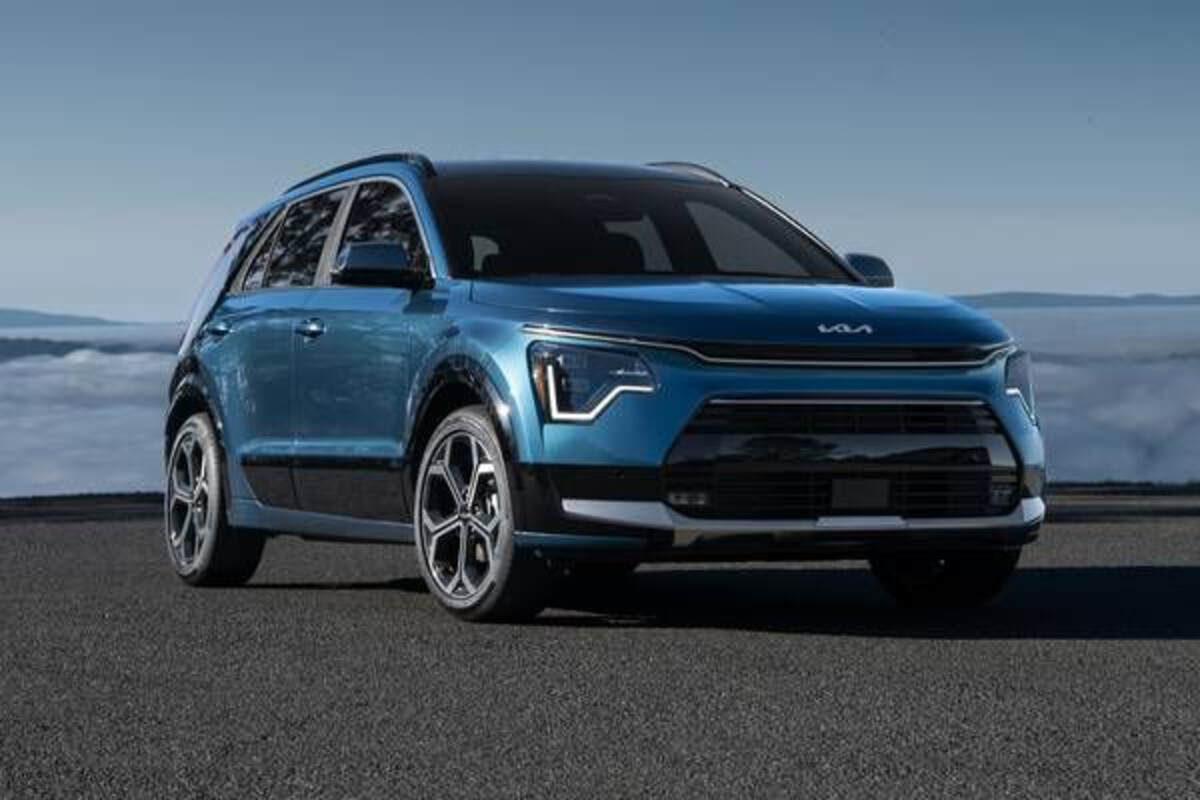
3: Kia Niro Hybrid
The Kia Niro Hybrid is another vehicle that initially seems like a smart choice. It’s compact, efficient, and relatively affordable. It occupies a unique space as a hybrid crossover that isn’t quite a car, nor a full SUV. However, this uniqueness hasn’t translated into strong resale value. Despite decent initial sales, the Niro Hybrid struggles to hold its value and often sells below market expectations in the used segment.
The Niro’s problems start with identity. It’s marketed as a crossover, but it lacks all-wheel drive and doesn’t have the ground clearance to be truly SUV-like. As a result, it appeals to a narrow demographic—those who want the look of an SUV without the function. This lack of versatility reduces its resale appeal, especially when buyers can get more capable vehicles for similar prices on the used market.
Another issue is the brand hierarchy. Kia has made major strides in quality, but it still doesn’t carry the long-term hybrid credibility of Toyota or Honda. Buyers are cautious when it comes to used hybrid technology from newer or non-traditional brands. Even with a good warranty, many see the Niro as a gamble compared to more established options. That uncertainty causes depreciation to hit harder and faster.
Performance and refinement are also weak points. The Niro Hybrid feels underpowered compared to rivals and suffers from noticeable engine drone under load. The interior, while functional, lacks the polish and comfort of competing hybrids in the same price range. These shortcomings may not seem drastic when buying new, but they’re amplified in the used market, where even minor flaws are deal-breakers for potential buyers.
Even as a fuel saver, the Niro doesn’t stand out. It gets good mileage, but not enough to justify sacrificing performance, space, or perceived reliability. And with so many better-known hybrids available used, the Niro Hybrid often gets overlooked, leading to deeper price cuts and lower trade-in values. Dealers don’t want to stock them in high numbers, and buyers don’t actively seek them out, making resale a challenge.
All things considered, the Kia Niro Hybrid is a textbook case of a vehicle with niche appeal that fails to age well in the market. It’s not bad—it’s just forgettable. And in the fast-paced automotive world, forgettable often means low resale value and faster depreciation. Despite its efficiency, the Niro Hybrid simply doesn’t retain enough value to make it a worthwhile investment for many.
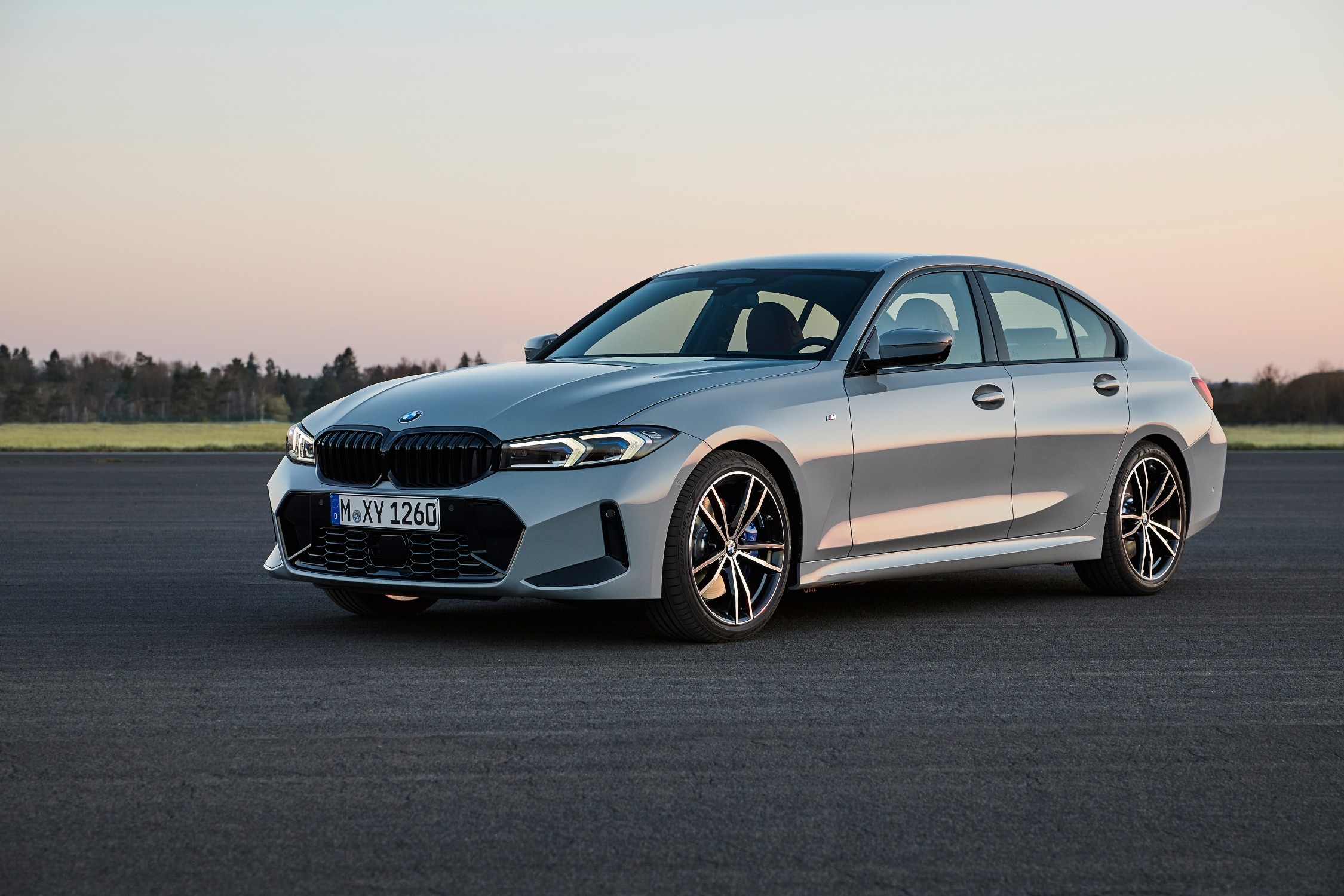
4: BMW 330e (Plug-in Hybrid)
The BMW 330e should be a slam dunk on paper: it’s a luxury sports sedan with the prestige of the BMW badge and the environmental appeal of plug-in hybrid technology. Unfortunately, the 330e suffers from serious depreciation issues, especially within the first three years of ownership.
While the vehicle delivers decent driving dynamics and some electric range, it ultimately fails to justify its premium price in the eyes of many buyers, especially once it hits the used market.
One of the biggest reasons the 330e loses value so quickly is the sheer complexity of its powertrain. Plug-in hybrids add layers of electrical and mechanical systems, and in BMW’s case, this means potential headaches and expensive repairs down the line. Even though BMW offers maintenance plans and warranties, buyers worry about what happens once those expire. As a result, used car shoppers often avoid this model unless it’s heavily discounted, forcing sellers to accept steep depreciation.
Compounding the problem is the fact that the 330e’s electric-only range is unimpressive. With real-world EV driving distance typically limited to 18–22 miles, it doesn’t provide a meaningful electric driving experience for most people. In essence, it functions more like a slightly more efficient version of the regular 3 Series rather than a true plug-in hybrid contender. When buyers realize that the fuel economy improvements are marginal compared to the standard 330i, the hybrid premium becomes harder to justify.
Driving enthusiasts, who traditionally make up a large part of the BMW 3 Series market, also tend to shy away from the 330e. The extra weight of the battery and electric components dulls the handling compared to its non-hybrid siblings. It’s still quick in a straight line, but it lacks the crispness that defines the BMW brand. Buyers looking for “The Ultimate Driving Machine” often leave disappointed by the 330e’s compromises.
Another factor dragging down the 330e’s resale value is the rapidly changing hybrid and EV landscape. Newer plug-in models, even from non-luxury brands, often offer more electric range, better incentives, and more competitive pricing. The 330e quickly looks outdated next to the latest options from Tesla, Genesis, or even Kia. As a result, both private buyers and dealerships are less willing to pay a premium for a used 330e, accelerating depreciation.
Ultimately, the BMW 330e is a niche product caught in an awkward middle ground. It’s not efficient enough to satisfy hybrid purists, and it’s not engaging enough to delight performance enthusiasts. Combine that with concerns about long-term reliability and an underwhelming electric range, and it’s no surprise that this plug-in hybrid loses value at an alarming rate. For those buying new, the depreciation curve is steep. For used buyers, it’s often seen as a compromise rather than a bargain.
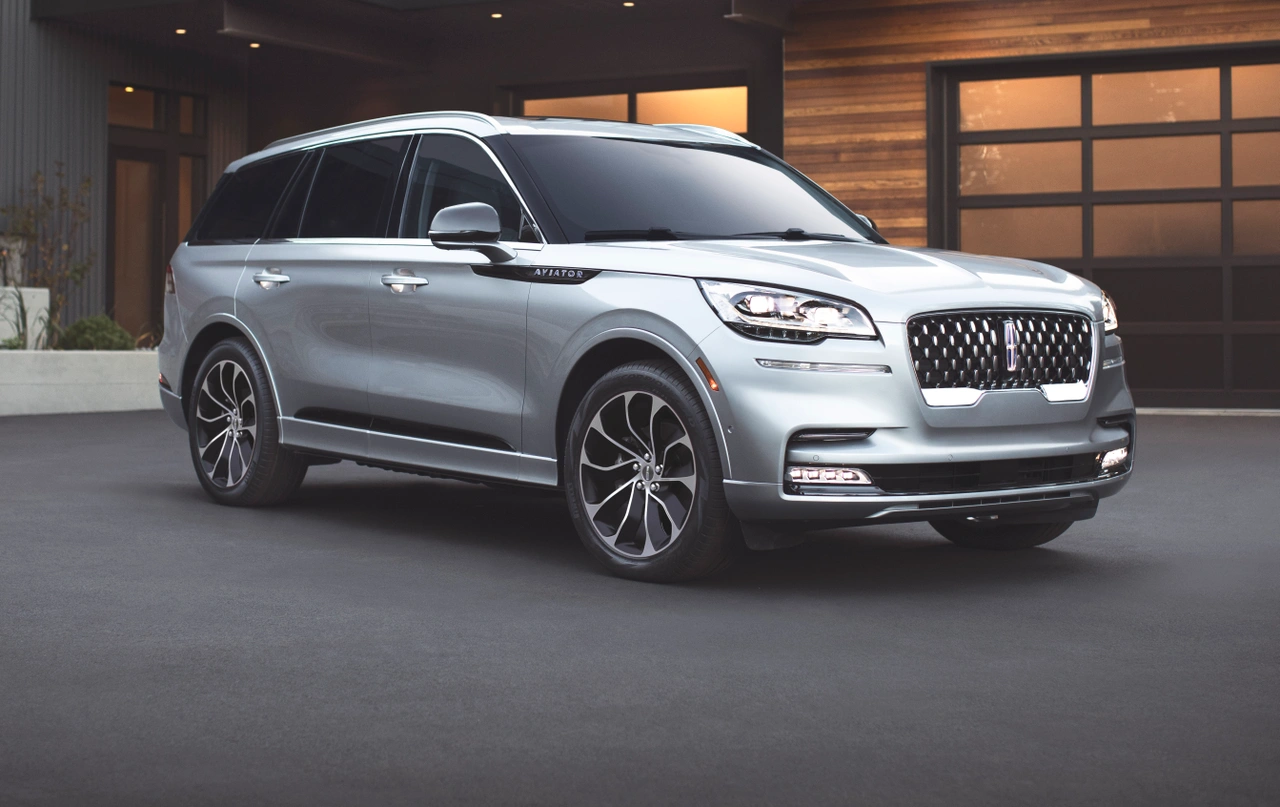
5: Lincoln Aviator Grand Touring (PHEV)
The Lincoln Aviator Grand Touring is a plug-in hybrid version of Lincoln’s luxurious three-row SUV. On paper, it offers a compelling mix: a powerful twin-turbo V6 paired with an electric motor, sophisticated styling, and premium interior materials. Unfortunately, despite these features, the Aviator PHEV depreciates faster than many of its competitors, and faster still than non-hybrid variants. It’s a hybrid that doesn’t make financial sense for many buyers once they look beyond the marketing.
One of the key reasons for its steep depreciation is price bloat. The Grand Touring trim often exceeds $75,000 when well equipped, pushing it into the territory of more established European luxury SUVs — many of which offer better performance, more refined hybrid systems, or superior brand prestige.
Buyers spending that kind of money expect excellence in every category, and the Aviator PHEV struggles to meet those expectations across the board. When shoppers compare it to similarly priced BMW X5s, Audis, or Volvos, the value proposition quickly falls apart.
Moreover, the Aviator PHEV’s electric-only range is disappointingly low, with most owners reporting around 18 miles in real-world conditions. For a vehicle of this size and price, that kind of range feels negligible. Many buyers find themselves using the gas engine far more than expected, defeating the purpose of the plug-in hybrid and making the added cost hard to justify. It lacks the ability to run as a proper EV for any meaningful commute, which renders its hybrid label more of a gimmick than a true efficiency benefit.
Reliability concerns also play a big role in its depreciation. Lincoln has made strides in quality, but the complexity of the PHEV system introduces potential points of failure — especially with a twin-turbocharged engine, an electric motor, and a large battery system all interacting.
Consumer reports and user forums have noted software glitches, drivetrain hiccups, and expensive repairs, especially post-warranty. This creates a sense of risk in the used market, scaring away private buyers and lowering trade-in values.
Interior and ride quality, while luxurious in appearance, have their quirks too. Fit and finish aren’t always consistent, and the infotainment system has been criticized for lag and complexity. In a segment where competitors are making real strides in user experience and refinement, the Aviator feels a step behind — especially when buyers realize that similarly priced non-hybrid versions often perform better and are more reliable. This makes the PHEV variant even harder to justify financially.
In the end, the Aviator Grand Touring is a case of over-promising and under-delivering. It carries a premium badge and a premium price but fails to deliver the kind of efficiency, reliability, or ownership experience buyers expect from a top-tier plug-in hybrid.
For new buyers, depreciation begins the moment they drive it off the lot — and continues at a rapid pace. For used car shoppers, it’s a vehicle that screams “steep discount” rather than “smart investment.” It’s a hybrid that loses value fast — and for good reason.
Also Read: 5 Cars With the Simplest Jump-Start Terminals and 5 Hiding Them
As the automotive industry marches rapidly toward electrification, hybrid vehicles remain the critical bridge between the gasoline era and the electric future. They offer a pragmatic alternative to fully electric vehicles, especially for drivers who want better fuel economy without worrying about charging infrastructure.
But just like traditional gas-powered cars, the value of a hybrid depends on far more than just what it can do on the road. Depreciation, reliability, maintenance, brand trust, and real-world usability all factor into whether a hybrid is a smart purchase—or a costly mistake.
Our exploration of five hybrids worth every penny reveals a consistent pattern: these vehicles have stood the test of time, either through decades of refinement or through exceptionally smart design. Cars like the Toyota Prius and Honda Accord Hybrid don’t just sip fuel—they’re built to last, with hybrid systems that are among the most mature and reliable in the industry.
These models aren’t just about savings at the pump—they offer low lifetime ownership costs, strong resale value, and enduring appeal across multiple generations of buyers.
Similarly, the Toyota RAV4 Hybrid and Ford Maverick Hybrid prove that efficiency and practicality can coexist in utility vehicles. Their smart packaging, real-world capability, and minimal sacrifices make them hybrids that don’t feel like compromises. These are vehicles you can own for years, rack up miles on, and still get a solid return when it’s time to sell.
And when it comes to luxury, the Lexus RX 500h blends opulence with Toyota’s trusted hybrid powertrain, creating a premium experience that holds up far better than many European rivals.
On the flip side, the five hybrids that lose value instantly highlight the dangers of marketing over substance. The Hyundai Ioniq Hybrid, despite its great mileage numbers, fails to hold value due to brand perception and stiff competition. The Chrysler Pacifica Hybrid—an ambitious minivan that blends utility with plug-in tech—struggles because of poor reliability history and a lack of resale demand. These vehicles aren’t inherently bad, but they quickly become less appealing when buyers see them next to better-established alternatives with fewer compromises.
Luxury plug-in hybrids like the BMW 330e and Lincoln Aviator Grand Touring suffer from a different issue: they ask for premium pricing but fail to deliver premium hybrid performance or reliability. With limited electric range and complex mechanical systems, they often become more trouble than they’re worth, especially after warranties expire.
Depreciation on these models is steep, and the used market is cautious, if not outright disinterested. A vehicle that loses tens of thousands in value over just a few years isn’t just a poor investment—it can be a financial regret.
One of the key takeaways from this breakdown is that not all hybrids are equal, and not all of them are worth the premium. Buyers need to be savvy, doing more than just comparing MPG numbers. Consider brand history, resale trends, and overall ownership experience. Look for vehicles with established hybrid systems, proven reliability, and broad market demand. The best hybrid for your wallet is the one that delivers value not only on Day 1, but every day you drive it—and when you eventually sell it.
As hybrid technology continues to evolve, the divide between winners and losers will only grow more pronounced. Automakers are racing to improve range, simplify hybrid systems, and combine fuel economy with comfort and performance. The vehicles that succeed will be those that strike the right balance—and maintain their relevance in a fast-moving market.
Whether you’re considering a hybrid for its environmental benefits, fuel savings, or daily practicality, your decision should also factor in how well that vehicle holds up over time. Choose wisely, and your hybrid can pay dividends for years. Choose poorly, and you may be left with a depreciating asset and rising repair bills. The difference is in the details—and now, thanks to this guide, you know exactly where to look.

